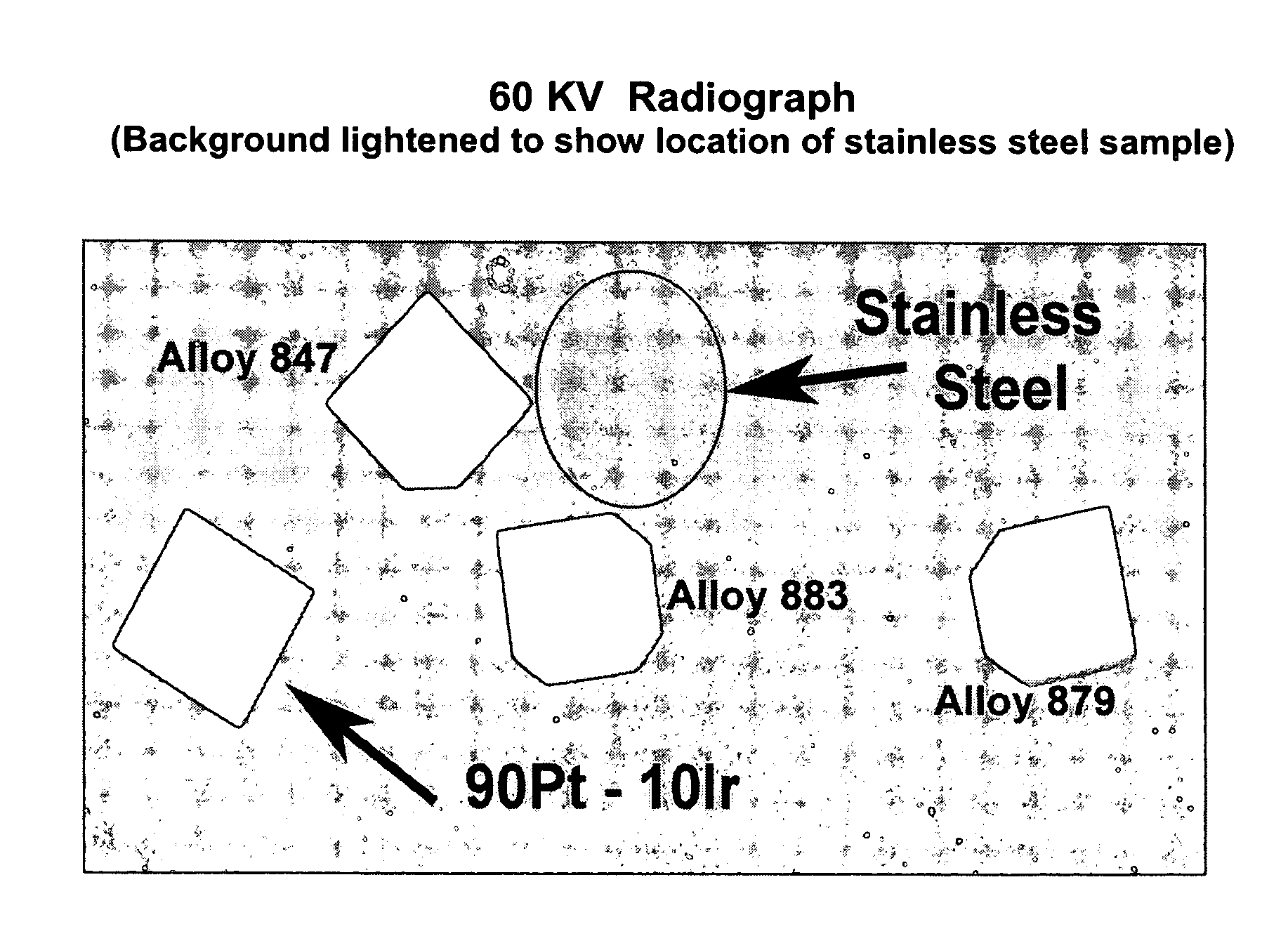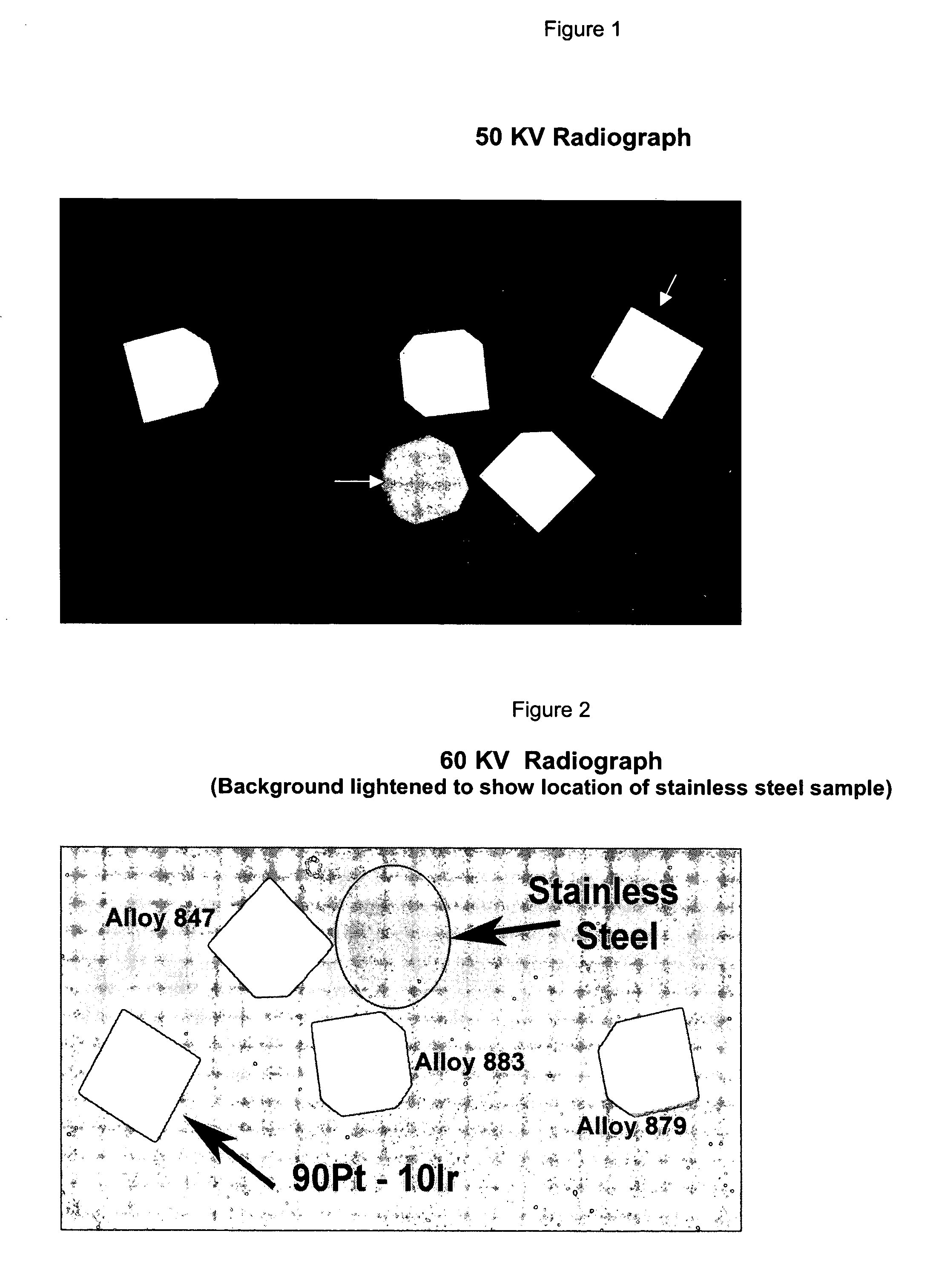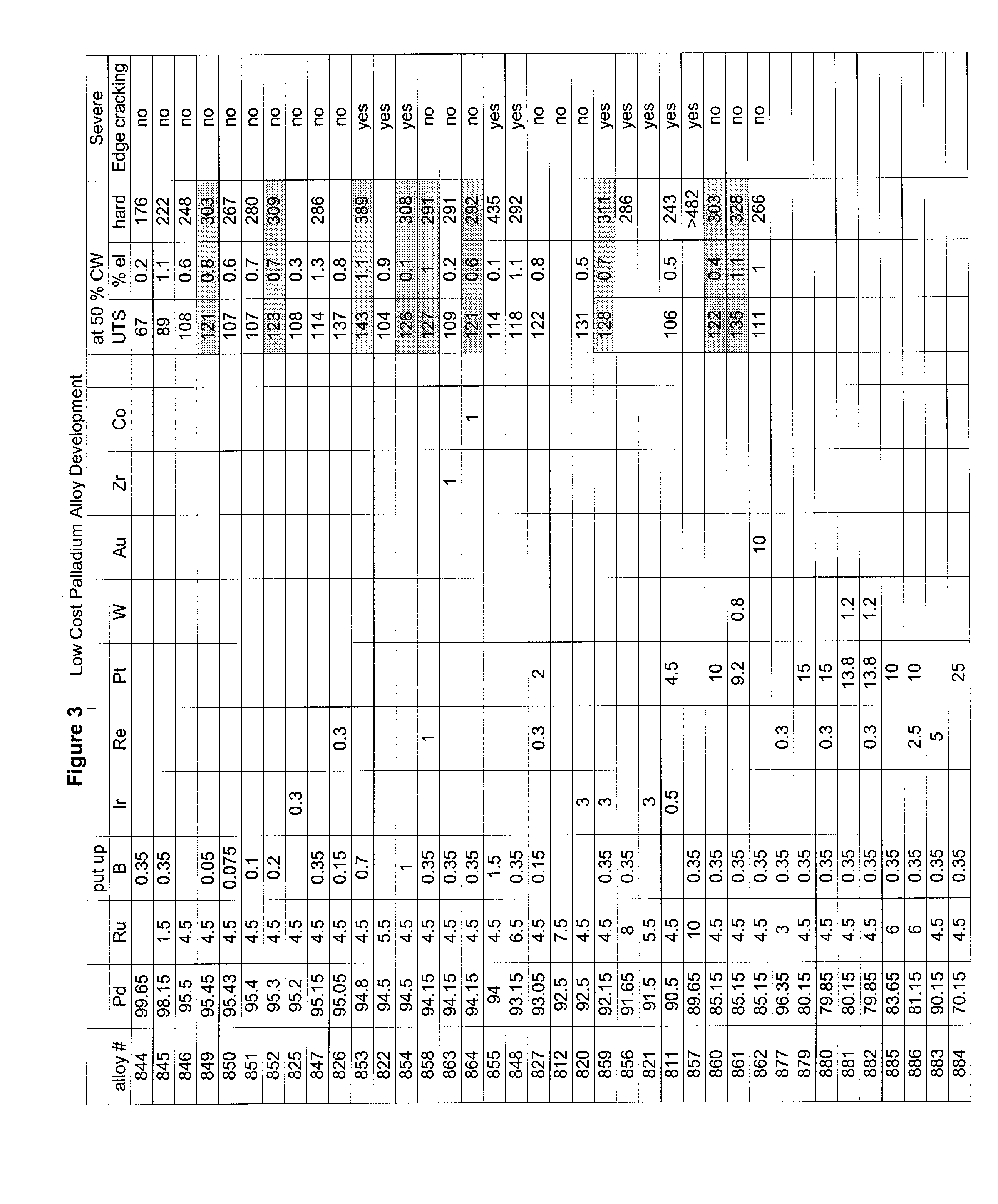Palladium alloy
a technology of palladium and alloy, applied in the field of metal alloy, can solve the problems of significant economic strain on the continued use of high platinum alloy, and the platinum price has reached record levels
- Summary
- Abstract
- Description
- Claims
- Application Information
AI Technical Summary
Benefits of technology
Problems solved by technology
Method used
Image
Examples
first embodiment
[0086]An alloy which is referred to in the tables as alloy 100, has been formed into wires with diameters between 0.0025 inch and 0.010 inch. The alloy is provided in two grades, a standard grade and a medical grade. The standard grade has a balance of Pd, 10 to 11% Re, 0.03 to 0.13 B, a maximum of 1000 ppm for each of Rh, Pt, Ru, Os, Au and Ag, and a maximum of 0.2% of other ingredients. The medical grade has a balance of Pd, 10 to 11% Re, 0.03 to 0.13 B, a maximum of 1000 ppm for each of Rh, Pt, Ru, Os, Au and Ag, a total of 30 ppm maxium for Pb, As, Bi and Cd, a maximum 100 ppm for Cu, a maximum 75 ppm for Ni, a maximum 100 ppm for Fe, and a maximum 500 ppm for other ingredients excluding Rh, Pt, Ru, Os, Ag and Au, with a maximum 200 ppm for all other elements. For a wire according to this embodiment of a diameter of 0.002 inches to 0.015 inches, a stress relieved strength (UTS) of 180 to 235 ksi has been achieved for an elongation of 2.5% minimum in 10 in gauge length.
[0087]In ...
second embodiment
[0088]In a second embodiment, the alloy has a balance of Pd—about 5% Re—and about 0.08% B nominal. The ranges for the components are Re 5% plus or minus 0.5%—B 0.08% plus or minus 0.05% and a balance of Pd. This embodiment has attributes of low cost, low density, biocompatible, good radiopacity, and moderate strength.
third embodiment
[0089]In a third embodiment, the alloy has a balance of Pd—about 10% W—about 4% Ru—and about 0.08% B nominal. The components of this embodiment are in a range of W 10% plus or minus 0.5%—Ru 4% plus or minus 0.5%—B 0.08% plus or minus 0.05% and a balance of Pd. The attributes of this embodiment are low cost, low density, very high hardness with good processability, good radiopacity, and high strength.
PUM
| Property | Measurement | Unit |
|---|---|---|
| elongation | aaaaa | aaaaa |
| thick | aaaaa | aaaaa |
| atomic number | aaaaa | aaaaa |
Abstract
Description
Claims
Application Information
 Login to View More
Login to View More - R&D
- Intellectual Property
- Life Sciences
- Materials
- Tech Scout
- Unparalleled Data Quality
- Higher Quality Content
- 60% Fewer Hallucinations
Browse by: Latest US Patents, China's latest patents, Technical Efficacy Thesaurus, Application Domain, Technology Topic, Popular Technical Reports.
© 2025 PatSnap. All rights reserved.Legal|Privacy policy|Modern Slavery Act Transparency Statement|Sitemap|About US| Contact US: help@patsnap.com



